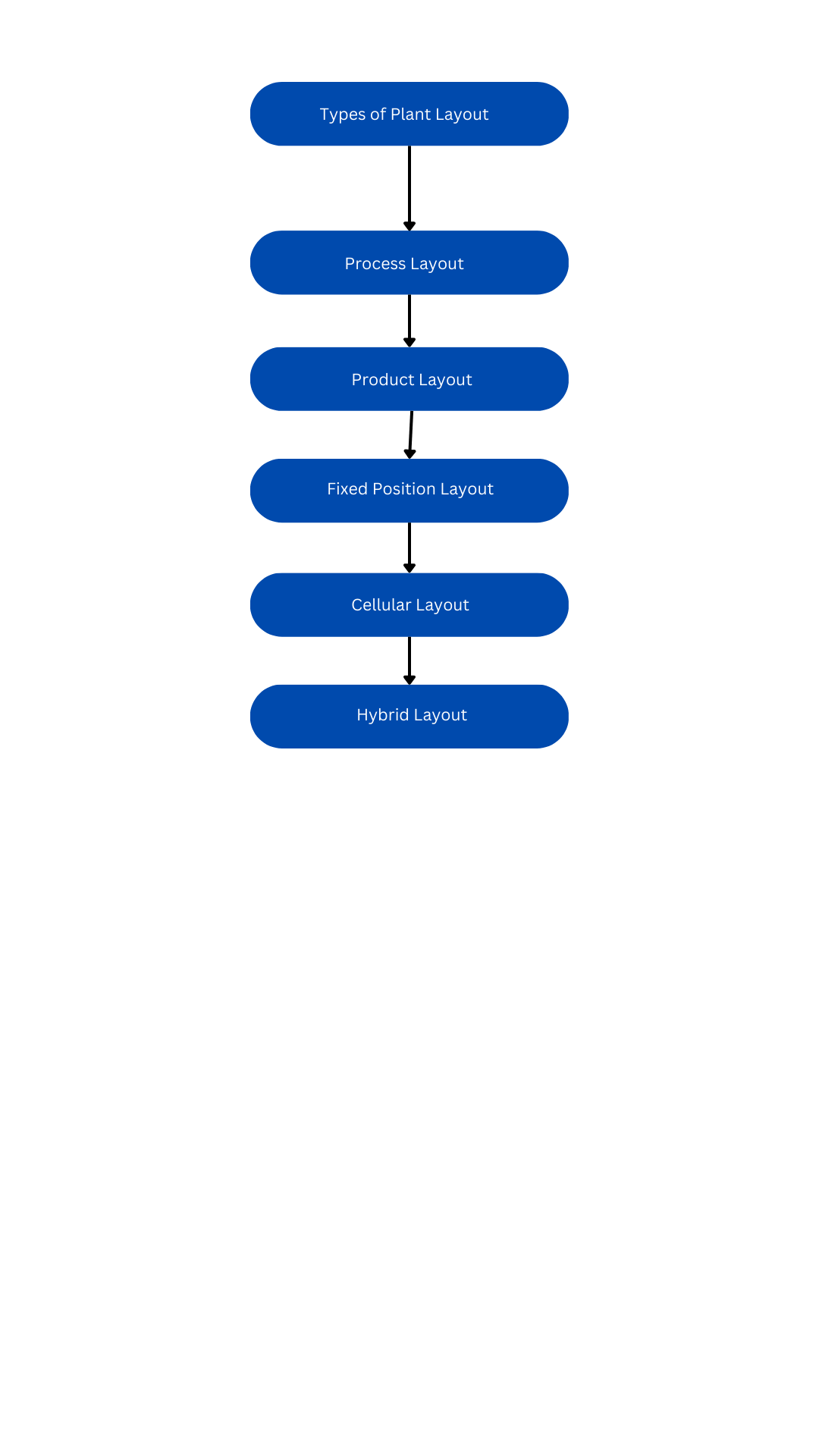Plant Location
Plant location refers to the process of selecting a suitable location for setting up a manufacturing plant or factory. The location of a plant is a critical decision as it can significantly impact the profitability and success of the business. Some of the factors that need to be considered when selecting a plant location are:
Availability of raw materials: The availability of raw materials is a critical factor in selecting a plant location. It is essential to locate the plant near the source of raw materials to minimize transportation costs.
Access to markets: The proximity to markets is another important factor to consider when selecting a plant location. A plant should be located close to the market it serves to reduce transportation costs and improve delivery times.
Transportation infrastructure: The quality of transportation infrastructure in the area is also an important consideration. Good roads, railways, airports, and ports can help reduce transportation costs and improve the supply chain efficiency.
Labor availability and cost: The availability of skilled and unskilled labor is a critical factor in selecting a plant location. It is essential to locate the plant in an area with a suitable labor force and competitive labor costs.
Government regulations: The regulatory environment of the area needs to be considered when selecting a plant location. Regulations related to taxes, labor laws, environmental laws, and other factors can impact the profitability of the business.
Climate and natural disasters: The climate and the likelihood of natural disasters such as floods, earthquakes, and hurricanes should be considered when selecting a plant location.
Infrastructure facilities: The availability of power, water, and other infrastructure facilities such as telecommunication services and waste disposal facilities is also an important factor to consider.
In summary, selecting a plant location requires a careful analysis of various factors to ensure that the chosen location meets the needs of the business and provides a competitive advantage in the marketplace.
Types of Plant Layout
Plant layout refers to the arrangement of machinery, equipment, and other resources in a manufacturing facility. There are several types of plant layouts, including:
Process layout: In a process layout, similar machines or processes are grouped together in departments or work centers. This layout is commonly used in industries that produce a variety of products with low volumes, such as job shops or repair facilities.
Product layout: In a product layout, the equipment and workstations are arranged in a linear sequence according to the production process. This layout is commonly used in industries that produce high volumes of standardized products, such as automobile assembly plants or food processing facilities.
Fixed position layout: In a fixed position layout, the product remains stationary, and the equipment and workers move to the product to perform their tasks. This layout is commonly used in industries that produce large, complex products, such as aircraft or ships.
Cellular layout: In a cellular layout, machines and equipment are grouped together in cells, and each cell produces a family of products with similar processing requirements. This layout is commonly used in industries that produce high volumes of products with varying production requirements, such as consumer electronics.
Hybrid layout: A hybrid layout is a combination of two or more of the above layouts. This layout is commonly used in industries that produce a variety of products with varying production requirements and volumes, such as a job shop that also produces high-volume products.
The selection of the appropriate plant layout depends on factors such as the type of product being manufactured, production volume, process flow, and resource availability. The plant layout should be designed to maximize efficiency, minimize waste, and ensure safety in the manufacturing facility.
